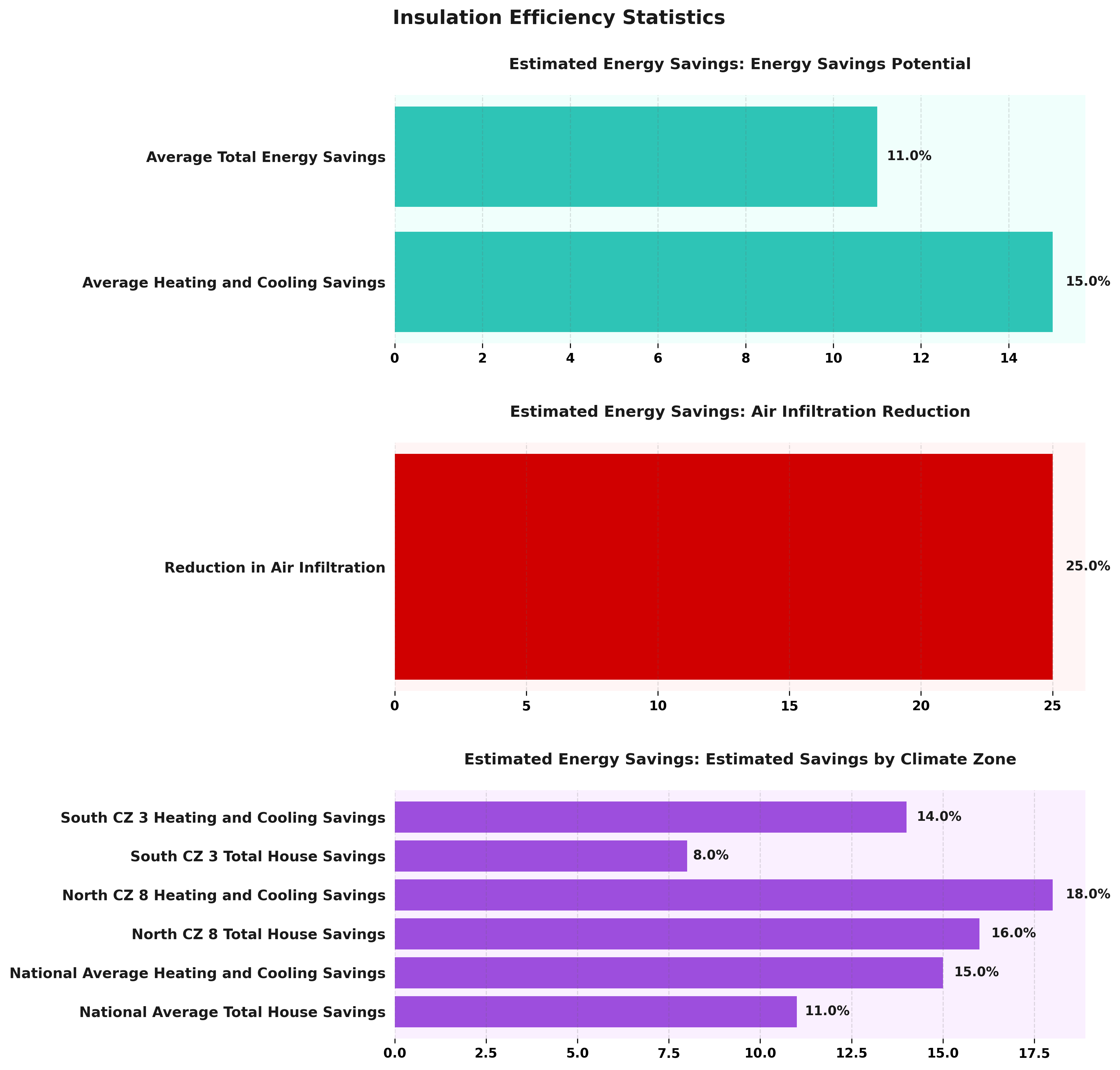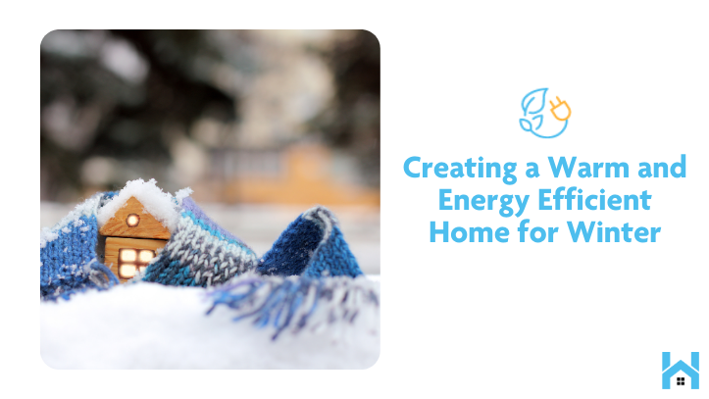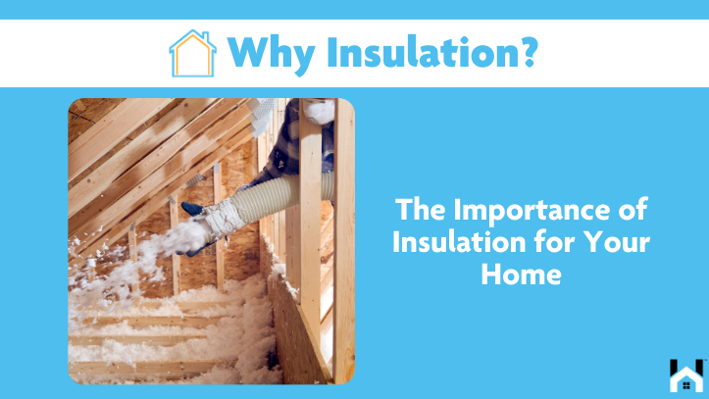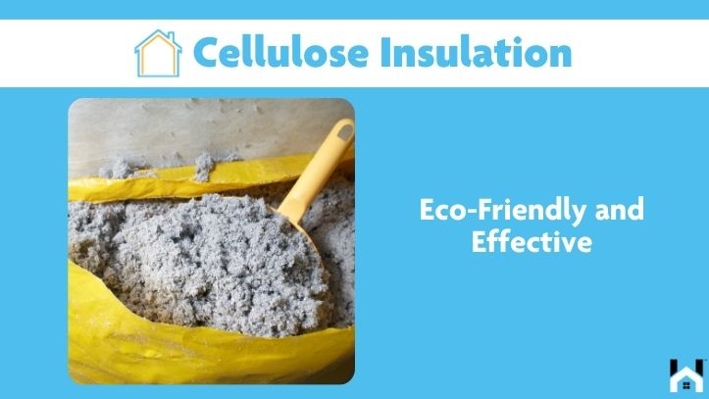Proper insulation is essential for enhancing energy efficiency and comfort in both residential and commercial properties. Understanding R-Value is just the starting point; it is important to consider various factors that influence insulation performance, such as the building envelope, location, climate, and the materials used.
This discussion will explore R-Value and other key metrics like U-Value and thermal conductivity, emphasizing their importance in achieving optimal energy efficiency.
By uncovering the layers of insulation performance, you will learn the steps you can take to ensure your space is well-protected.
The Crucial Role of Insulation in Enhancing Energy Efficiency and Comfort
.jpg_00.jpeg)
Proper insulation plays a vital role in ensuring indoor comfort and energy efficiency in both residential and commercial buildings through effective climate control. It has a significant impact on thermal performance by minimizing heat transfer, which helps reduce energy loss, air leakage, and ultimately lowers utility bills.
Additionally, effective insulation materials are designed to prevent air leaks and moisture buildup, both of which can lead to issues like mold growth, structural damage, and reduce overall insulation effectiveness.
Acknowledging the significance of insulation in energy-efficient buildings also includes adhering to building codes, which promote safety and sustainability. Furthermore, insulation offers soundproofing benefits, contributing to occupant comfort by minimizing noise transmission and ensuring better indoor air quality.
Understanding R-Value
R-Value is a measure of thermal resistance that indicates how effectively insulation can resist heat transfer, making it crucial for the energy performance of a building and compliance with insulation standards.
A higher R-Value reflects better insulation effectiveness, which is key to maintaining comfortable indoor temperatures and lowering energy costs, contributing to energy-efficient homes.
By understanding how R-Value is calculated, homeowners and builders can make informed decisions about the appropriate insulation thickness needed to achieve their specific needs and efficiency goals, considering product specifications and life cycle analysis.
Definition and Calculation of R-Value in Building Performance
The R-Value is a critical measure of insulation's thermal resistance, determined by dividing the material's thickness by its thermal conductivity and considering its chemical resistance and fire resistance. This value indicates how effectively insulation can impede heat transfer, making it essential for assessing its effectiveness across various applications. Understanding the R-Value is particularly important when selecting materials for projects that emphasize energy efficiency, comfort levels, and soundproofing.
Higher R-Values indicate enhanced resistance to heat flow, which is vital for energy conservation and reducing overall utility costs. This can lead to significant reductions in energy costs over time, especially in regions with considerable temperature fluctuations, according to energy efficiency ratings.
Builders and architects often consult R-Value charts to identify the most suitable insulation types, ensuring that they choose materials that deliver the required thermal resistance while also taking into account other performance factors, such as moisture control, sound insulation, and insulation durability. This comprehensive approach is crucial for developing sustainable and resilient buildings.
Factors Affecting Insulation Performance and Thermal Envelope
Multiple factors significantly influence insulation performance, including material selection, installation techniques, and environmental conditions, all of which contribute to overall energy efficiency.
The decision regarding insulation materials—be it foam insulation, fiberglass insulation, cellulose insulation, or reflective insulation—has a substantial impact on thermal dynamics and overall energy efficiency. It is crucial to use proper installation techniques to prevent problems like air permeability and thermal bridging, both of which can result in energy loss and reduced insulation properties.
Furthermore, conducting energy audits not only informs insulation strategies but also enhances overall energy efficiency and contributes to significant cost savings and environmental sustainability.
Insulation Efficiency Statistics

The Insulation Efficiency Statistics provide valuable insights into potential savings and the positive impact of insulation on overall energy conservation and environmental health across various metrics and climate zones. These statistics are crucial for homeowners and businesses looking to optimize energy use and reduce costs.
Estimated Energy Savings highlight the impact of insulation on energy consumption, emphasizing cost savings and environmental impact.
On average, enhancing insulation can lead to a 15% savings in heating and cooling costs, which not only benefits individual households but also contributes to reduced energy demand at the community level, crucial for regions with extreme temperatures. Overall, there's a 11% reduction in total energy usage, indicating that insulation contributes to significant energy efficiency beyond just temperature regulation.- Reduction in air infiltration is noted at 25%, emphasizing insulation's role in minimizing unwanted air exchange and enhancing energy performance.
- This reduction not only improves energy efficiency but also enhances indoor air quality and comfort.
Estimated Savings by Climate Zone underscore regional differences in insulation efficiency. In the North Climate Zone 8, total house savings are 16% with heating and cooling savings reaching 18%. These figures reflect the higher insulation benefits in colder climates, where energy demands for heating are substantial.
Conversely, the South Climate Zone 3 shows 8% total house savings and 14% heating and cooling savings, illustrating how insulation plays a critical role in energy efficiency across diverse climates, promoting sustainability even in milder regions.
Overall, the Insulation Efficiency Statistics underscore that investing in quality insulation not only yields significant energy savings but also enhances environmental sustainability and fosters economic growth across different climate zones. By reducing air infiltration and optimizing heating and cooling efficiency, insulation serves as a key component in energy conservation strategies, promising economic benefits and environmental sustainability.
Location and Climate's Impact on Insulation
Location and climate are fundamental factors in determining the most effective insulation strategy for any building project, influencing building science and construction materials. Different regions exhibit varying temperature regulation needs, which directly influence the selection of insulation materials, such as spray foam or mineral wool, aimed at enhancing energy efficiency and regulatory compliance.
For example, regions experiencing extreme seasonal temperature fluctuations may find that rigid foam insulation is particularly beneficial due to its high R-value per inch. In contrast, milder climates might opt for cellulose insulation, appreciated for its eco-friendly characteristics.
It is essential to adopt geographically tailored approaches, as they not only optimize energy efficiency but also enhance indoor comfort and the durability of buildings. By understanding local climate patterns, builders can select insulation solutions that work in harmony with environmental conditions, ensuring that buildings maintain a balanced temperature year-round while minimizing energy consumption.
Materials Used in Optimal Insulation
.jpg_01.jpeg)
The selection of insulation materials is essential for achieving optimal energy efficiency and thermal performance in buildings. Common insulation types include foam insulation, fiberglass insulation, and cellulose insulation, each possessing unique properties that cater to specific applications.
For example, foam insulation is well-regarded for its exceptional air-sealing capabilities, which effectively reduce drafts, heat loss, and improve building performance. This characteristic makes it a preferred choice for attics and wall cavities where maintaining consistent temperatures is particularly important.
In contrast, fiberglass insulation is known for its affordability and durability, making it a popular option in residential properties and contributing to sustainable building. Cellulose insulation, composed of recycled materials, not only supports environmental sustainability but also offers excellent soundproofing, contributing to the comfort of living spaces.
By selecting high-quality insulation materials, homeowners can drastically reduce energy consumption and contribute to a more sustainable living environment.
Effective Installation Techniques for Optimal Energy Efficiency
Proper installation techniques are essential for maximizing insulation effectiveness, leading to improved energy efficiency and enhanced comfort in homes and businesses. When insulation is poorly installed, it can lead to common issues such as air leaks and thermal bridging, which compromise the benefits that insulation is meant to provide, as highlighted in insulation testing and insulation research.
These problems can contribute to increased energy costs, reduced comfort levels, and potential damage to the building structure over time. To address these challenges, several techniques can be implemented, such as employing radiant barriers and ensuring proper insulation maintenance.
- Using spray foam to seal gaps.
- Ensuring that insulation is properly fitted within wall cavities.
- Employing vapor barriers to prevent moisture buildup.
Understanding the specific requirements of different areas—be it an attic, basement, or exterior wall—can significantly impact the overall performance of insulation upgrades. By prioritizing these installation methods, homeowners can create a more efficient and reliable thermal barrier, ultimately leading to an enhanced living environment and reduced energy bills.
Beyond R-Value: Comprehensive Measures for Superior Energy Performance
R-Value is indeed a crucial indicator of how effective insulation is, but it's important to recognize that other measures, such as U-Value and thermal conductivity, also significantly contribute to evaluating insulation performance and energy retrofits.
Grasping these values, along with considerations like air leakage, moisture control, and acoustic performance, is essential for attaining a thorough level of energy efficiency in insulation solutions.
U-Value and Thermal Conductivity in Energy Performance
U-Value is a critical measurement for understanding heat transfer efficiency, which is vital for achieving superior energy performance in residential and commercial buildings. Unlike R-Value, which indicates resistance to heat flow, U-Value reflects the amount of heat that escapes, making it an important factor in energy efficiency evaluations.
Understanding U-Value is particularly important in climates where minimizing energy loss is essential for achieving passive house standards. This measurement complements R-Value by offering a more comprehensive view of how effectively an insulation material can maintain warmth in winter and coolness in summer.
A lower U-Value signifies reduced thermal conductivity, which indicates that the insulation is effectively minimizing heat transfer and, as a result, enhancing overall energy efficiency.
Considering both U-Value and R-Value enables informed decisions regarding insulation products, enhancing comfort, decreasing energy expenses, and minimizing environmental impact.
Air Leakage and Infiltration
Minimizing Air Leakage and Infiltration for Improved Energy Efficiency
Air leakage and infiltration play a significant role in energy loss within buildings, which can severely compromise insulation performance and energy performance indicators. It is crucial to implement effective moisture control strategies to mitigate these issues and improve overall energy efficiency.
When there are gaps, cracks, and poorly sealed areas, conditioned air tends to escape, causing heating and cooling systems to work harder to maintain the desired indoor temperatures. This not only leads to increased energy consumption but also affects comfort levels within the space.
Therefore, addressing these concerns becomes essential not just for financial savings, but also for creating a comfortable living environment.
By prioritizing comprehensive sealing and weatherization techniques, property owners can substantially reduce drafts and temperature fluctuations. This ultimately enhances both energy conservation and the well-being of occupants.
This proactive approach highlights the importance of maintaining a well-sealed building envelope, which is a fundamental aspect of modern energy-efficient practices in the construction industry.
Moisture Control
.jpg_10.jpeg)
Effective Moisture Control for Enhanced Insulation Performance
Effective moisture control is vital for preserving insulation performance and ensuring optimal indoor air quality and comfort. When vapor barriers and insulation materials are properly installed, they help prevent moisture buildup, which can compromise the insulation and contribute to mold growth.
Inadequate moisture management can significantly reduce the lifespan of insulation systems, leading to increased energy costs and potential health issues related to poor air quality and mold resistance. While materials such as fiberglass and foam board are well-regarded for their insulating properties, they can lose effectiveness when subjected to excessive dampness.
This is where effective vapor barriers come into play; they serve as a protective barrier against moisture intrusion, ensuring that the insulation maintains its thermal efficiency.
Prioritizing moisture control not only enhances insulation durability but also fosters a healthier indoor environment by eliminating allergens and irritants, thereby promoting eco-friendly insulation practices.
Enhancing Insulation Performance for Energy Efficiency
Improving insulation performance is essential for enhancing energy efficiency and ensuring occupant comfort in any building.
There are several effective strategies to consider, such as:
- Upgrading attic insulation and basement insulation
- Sealing air leaks
- Applying effective weatherization techniques
These approaches can greatly enhance the overall thermal performance of a structure, supporting insulation sustainability.
Upgrading Insulation
Upgrading insulation is a vital strategy for not just improving energy efficiency but also enhancing overall comfort and reducing environmental impact, making it a smart investment for both residential and commercial buildings. By choosing advanced insulation materials and techniques, property owners can greatly enhance the effectiveness of insulation and lower their energy costs.
This initiative not only aids in maintaining comfortable indoor temperatures throughout the year but also plays a crucial role in reducing environmental impact by decreasing energy consumption.
Innovative materials such as spray foam, fiberglass, and cellulose have become popular options due to their excellent thermal resistance values, which help to minimize heat loss during winter and keep interiors cool in the summer months.
Additionally, advanced technologies like reflective insulation can amplify these benefits by reflecting radiant heat away from living spaces, ultimately contributing to overall improvements in building performance and sustainability, aligning with insulation technologies.
Sealing and Weatherization
Sealing and weatherization are crucial processes that not only enhance insulation performance but also significantly reduce energy costs and environmental impact, ensuring a more sustainable living space. When these techniques are properly executed, they help maintain comfortable indoor temperatures while also reducing energy costs.
Minimizing air leaks can lead to significant energy savings and improved comfort, allowing HVAC systems to operate more efficiently and contributing to a more sustainable environment. Homeowners can take practical steps to identify and seal gaps around windows, doors, and ducts using materials such as caulk and weather stripping.
It is advisable to pay particular attention to areas prone to leaks, like attics and basements, as these spaces often contribute to considerable energy loss.
By dedicating time and effort to these sealing and weatherization processes, individuals not only support the longevity of their HVAC systems but also contribute to a more sustainable environment through reduced energy consumption, fulfilling home improvement goals.
Frequently Asked Questions
What is the 'R-Value' of insulation and why is it important for insulation performance?
.jpg_11.jpeg)
The 'R-Value' of insulation refers to its thermal resistance, or the ability to resist heat flow. It measures how well insulation can prevent heat from transferring between the inside and outside of a building. A higher R-Value means better insulation performance, as it indicates a higher resistance to heat flow.
Is the R-Value the only factor that affects insulation performance?
No, the R-Value is just one aspect of insulation performance. Other factors such as air leakage, moisture resistance, and durability also play a significant role in determining how well insulation performs in a building.
Why is it important to look beyond the R-Value when considering insulation options?
While the R-Value is important, it only tells part of the story when it comes to insulation performance. Looking at other factors like air leakage and moisture resistance can help ensure that the insulation will be effective in all weather conditions and over time.
How can air leakage affect insulation performance?
Air leakage, or the amount of air that can pass through the insulation, can significantly impact its performance. Even if an insulation material has a high R-Value, if it is not properly installed and allows for air leakage, its effectiveness can be greatly reduced. Additionally, proper insulation can lead to increased comfort and energy savings.
The Importance of Moisture Resistance in Insulation Performance
Moisture can greatly reduce the R-Value of insulation, as it allows heat to pass through more easily. Insulation with high moisture resistance can maintain its R-Value and overall performance, even in wet or humid conditions. Furthermore, moisture resistance can lead to longer-lasting insulation and improved indoor air quality.
Understanding Insulation Performance: Saving Energy and Money
Choosing insulation that has strong performance in all aspects, not just the R-Value, can help save energy and money in the long run. Insulation that effectively prevents heat transfer and air leakage can reduce the need for heating and cooling, leading to lower energy bills. Making informed insulation choices also contributes to environmental sustainability.
.2509031213252.webp)



